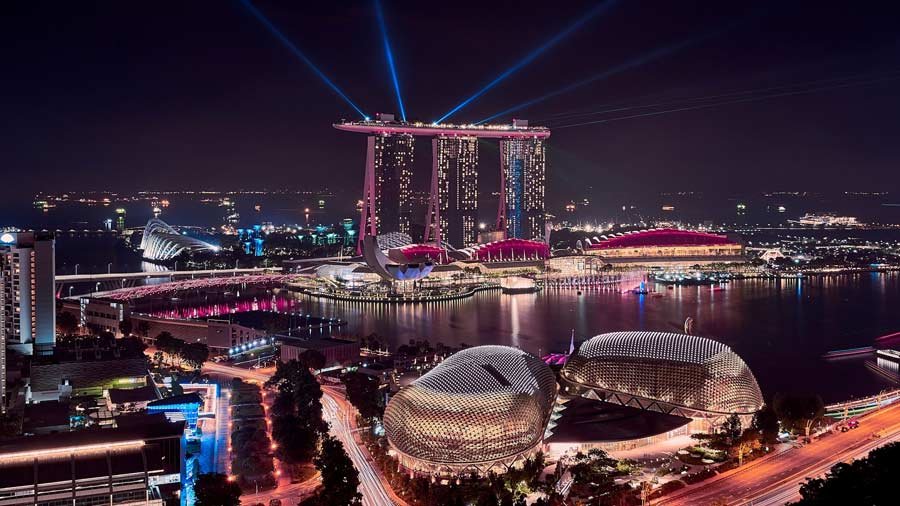Singapore is entering a new phase of sustained economic expansion. DBS Group Research projects that the country’s gross domestic product (GDP) could double by 2040, reaching between US$1.2 trillion and US$1.4 trillion, up from US$547 billion in 2024. With GDP per capita above US$90,000 and trade volumes exceeding three times its annual output, Singapore stands as one of the world’s most advanced and stable economies.
For foreign investors, the relevance of this projection lies not only in its magnitude but in how growth will be generated. The coming decade will hinge on digital infrastructure, advanced manufacturing, green transition, and consistent macro policy. Understanding these forces — and how they align with regulation and regional trade — is essential for long-term capital planning.
Structural transformation and growth drivers
Singapore’s next stage of growth will be defined by the composition of its economy, not the quantity of capital it attracts. The country continues to evolve its industrial base while maintaining fiscal discipline and competitiveness.
From 2025 to 2040, expansion will be driven by three connected engines: advanced services, technology-intensive manufacturing, and globally integrated trade. Together, they position Singapore as a compact economy that scales through productivity and connectivity.
Services: Financial, ICT, and logistics leadership
Services account for roughly 74 percent of Singapore’s gross value added, led by finance, logistics, ICT, and professional sectors. The Monetary Authority of Singapore (MAS) has built one of Asia’s strongest financial systems, managing over S$6 trillion in assets. The Digital Banking Framework has deepened fintech adoption and cross-border efficiency, reinforcing Singapore’s role as a trusted financial and logistics hub.
Manufacturing: From industrial to technological powerhouse
Manufacturing contributes about 21 percent of GDP and anchors Singapore’s innovation strategy.
The Manufacturing 2030 Roadmap aims for a 50 percent increase in value-added output by the end of the decade, with a focus on semiconductors, biopharma, and precision engineering. Singapore produces 11 percent of global semiconductors and 20 percent of semiconductor equipment, with major investments from GlobalFoundries, UMC, and Siltronic.
In 2024, the Economic Development Board (EDB) reported S$13.5 billion (US$9.9 billion) in fixed-asset commitments, generating over 20,000 skilled jobs — clear proof of investor confidence in high-value production.
Trade and connectivity: Expanding global reach
Trade remains Singapore’s economic foundation. The Trade 2030 Strategy aims to surpass S$1 trillion in exports, supported by projects such as the fully automated Tuas Megaport and Changi Terminal 5. Participation in 27 Free Trade Agreements and the Regional Comprehensive Economic Partnership (RCEP) guarantees access to global markets. This network cements Singapore’s position as Asia’s gateway for multinational expansion.
Monetary policy, currency, and regulatory foundations
Singapore’s stability rests on a transparent monetary regime and a predictable regulatory framework. The ability to keep inflation low, manage a strengthening currency, and sustain policy consistency continues to anchor investor confidence.
Exchange-rate-anchored stability
Unlike most central banks, MAS manages policy through the Singapore dollar’s nominal effective exchange-rate band (S$NEER) instead of interest rates. This structure maintains competitiveness for an open economy while containing inflation, key to preserving Singapore’s export advantage.
Currency and capital market outlook
DBS’s forecast of USD/SGD parity by 2040 assumes ongoing current-account surpluses of 15–17 percent of GDP and steady productivity growth near 2.3 percent a year. Even moderate appreciation of the SGD boosts USD-denominated returns. The Growth Equity Market Initiative expands liquidity for small- and mid-cap listings, while reforms strengthen investor participation across asset classes.
Green policy and carbon pricing
The Green Plan 2030 integrates sustainability into fiscal and industrial policy. The carbon tax — S$25 per ton of CO₂ in 2024, S$45 in 2026–2027, and S$50–80 by 2030 — sets a clear pricing path for sustainability compliance. The commitment to net-zero by 2050 ensures policy predictability for businesses planning within Singapore’s environmental framework.
Scenarios and economic determinants
Projecting Singapore’s path to 2040 requires flexible modeling rather than reliance on a single estimate. The following scenarios reflect varying productivity, trade, and capital-flow conditions that shape strategic planning.
Three pathways to 2040
The base case expects real GDP growth of 2.0–2.5 percent annually, producing nominal GDP between US$1.2 and US$1.3 trillion, with the USD/SGD exchange rate stable around 0.70–0.85.
The upside scenario assumes faster digital adoption and stronger inflows, pushing GDP toward US$1.4 trillion and strengthening the currency. A downside scenario of geopolitical or financial stress could limit growth to 1.5–1.8 percent, delaying full convergence with Western advanced economies.
Long-term structural determinants
Demographic constraints and technological adaptation will define Singapore’s long-run potential. With fertility at 0.97, workforce renewal depends on skilled immigration and automation. Labor productivity — rising about 4 percent annually — will rely on AI and robotics to sustain gains. External resilience is reinforced through RCEP, and digital economy accords with partners such as the UK and Australia, while the target for 80 percent green buildings by 2030 links infrastructure to decarbonization goals.
Sectoral investment opportunities
Singapore’s structural pillars translate into tangible opportunities across finance, technology, manufacturing, and tourism. Each sector benefits from transparent regulation, policy incentives, and regional integration.
Financial services
Singapore’s asset-management industry reached S$6.07 trillion (US$4.5 trillion) in December 2024, up 12.2 percent year on year. This reflects rising wealth inflows, regional fund domiciliation, and expansion of private-market strategies. The combination of tax efficiency and robust compliance keeps Singapore the preferred financial base for Asia-bound investors.
Digital infrastructure
The data-center market, valued at US$4.33 billion in 2025 and projected to reach US$5.60 billion by 2030 (CAGR 5.3 percent), is expanding under new sustainability-based licensing.
Following a 2019 moratorium, Singapore partially reopened data-center capacity in 2022 through the Data Centre Call-for-Applications (about 80 MW) and now allocates new capacity through high-efficiency, low-carbon criteria. This policy supports growth in AI and cloud infrastructure while maintaining energy discipline.
Advanced manufacturing
In 2024, EDB recorded S$13.5 billion in fixed-asset investment, of which S$11.1 billion came from manufacturing projects. These commitments are forecast to create 18,700 jobs and add S$23.5 billion in annual value once operational. Singapore’s share of 10 percent of global chip output and 20 percent of semiconductor-equipment production underscores its position as a strategic global manufacturing hub.
Tourism and lifestyle services
Visitor arrivals are projected between 17 and 18.5 million in 2025, generating S$29–30.5 billion in receipts — potentially surpassing pre-pandemic levels. The recovery strengthens investment prospects in hospitality, retail, and leisure real estate, supported by major expansions like Changi Terminal 5 and the Sentosa-Brani redevelopment.
Risk landscape and investor framework
Singapore’s openness brings cyclical exposure to global trade, energy prices, and regulatory shifts. However, its institutional strength allows proactive management of these pressures.
Principal risks
Key risks include global demand slowdown, energy volatility, labor-cost escalation, and higher compliance costs from carbon taxation. None undermines Singapore’s fundamentals, but it can tighten margins if unmitigated.
Mitigation and monitoring
Investors can hedge exposure through automation, regional diversification, and scenario modeling tied to DBS’s growth assumptions. Monitoring GDP growth, current-account surpluses, EDB investment flows, and MAS policy statements each quarter ensures an agile response to market shifts.
Strategic outlook and conclusion
Singapore’s projected economic doubling by 2040 represents the outcome of decades of disciplined governance, technological innovation, and sustainability planning. Its combination of transparent policy, open markets, and regional access makes it one of Asia’s most investable jurisdictions.
About Us
ASEAN Briefing is one of five regional publications under the Asia Briefing brand. It is supported by Dezan Shira & Associates, a pan-Asia, multi-disciplinary professional services firm that assists foreign investors throughout Asia, including through offices in Jakarta, Indonesia; Singapore; Hanoi, Ho Chi Minh City, and Da Nang in Vietnam; and Kuala Lumpur in Malaysia. Dezan Shira & Associates also maintains offices or has alliance partners assisting foreign investors in China, Hong Kong SAR, Mongolia, Dubai (UAE), Japan, South Korea, Nepal, The Philippines, Sri Lanka, Thailand, Italy, Germany, Bangladesh, Australia, United States, and United Kingdom and Ireland.
For a complimentary subscription to ASEAN Briefing’s content products, please click here. For support with establishing a business in ASEAN or for assistance in analyzing and entering markets, please contact the firm at asean@dezshira.com or visit our website at www.dezshira.com.






